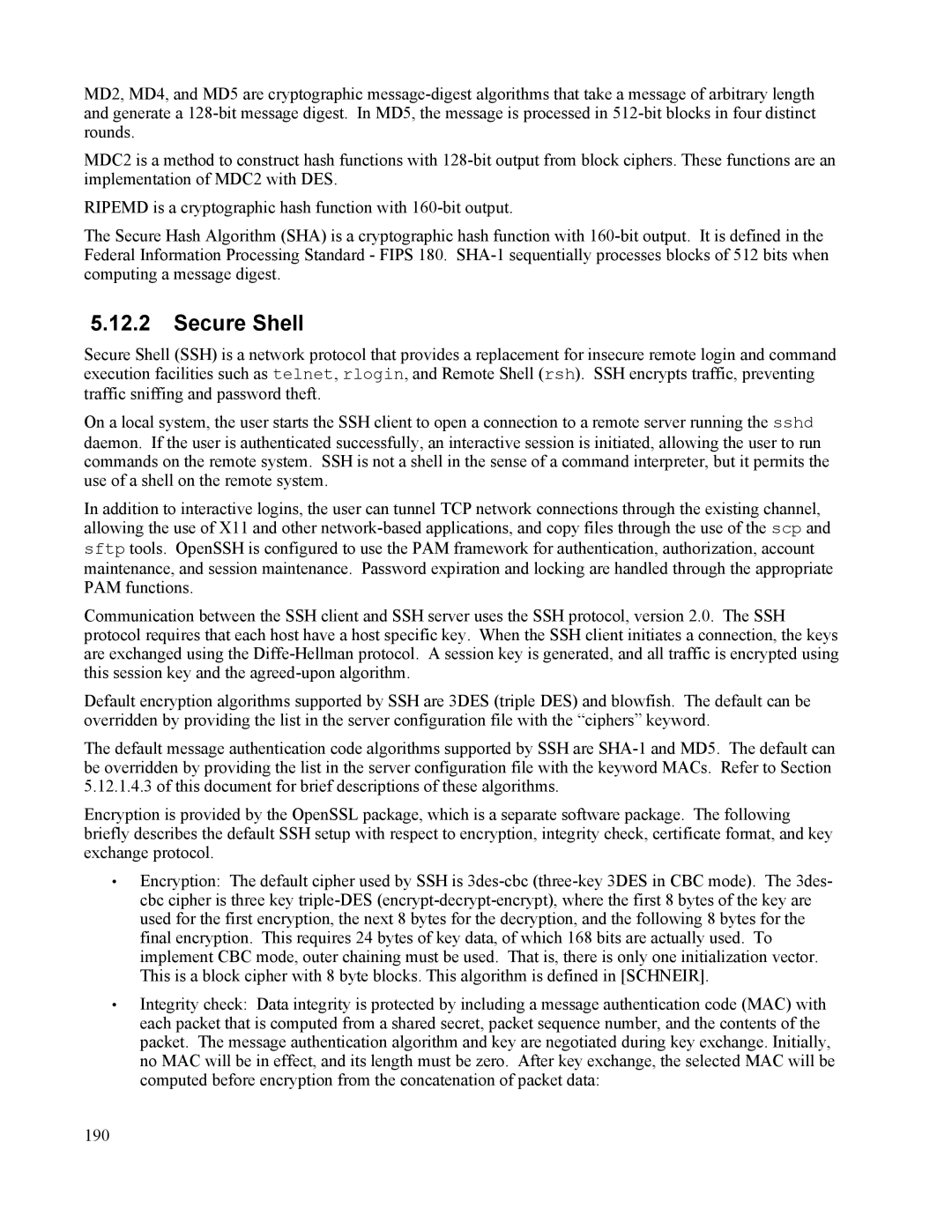MD2, MD4, and MD5 are cryptographic
MDC2 is a method to construct hash functions with
RIPEMD is a cryptographic hash function with
The Secure Hash Algorithm (SHA) is a cryptographic hash function with
5.12.2Secure Shell
Secure Shell (SSH) is a network protocol that provides a replacement for insecure remote login and command execution facilities such as telnet, rlogin, and Remote Shell (rsh). SSH encrypts traffic, preventing traffic sniffing and password theft.
On a local system, the user starts the SSH client to open a connection to a remote server running the sshd daemon. If the user is authenticated successfully, an interactive session is initiated, allowing the user to run commands on the remote system. SSH is not a shell in the sense of a command interpreter, but it permits the use of a shell on the remote system.
In addition to interactive logins, the user can tunnel TCP network connections through the existing channel, allowing the use of X11 and other
Communication between the SSH client and SSH server uses the SSH protocol, version 2.0. The SSH protocol requires that each host have a host specific key. When the SSH client initiates a connection, the keys are exchanged using the
Default encryption algorithms supported by SSH are 3DES (triple DES) and blowfish. The default can be overridden by providing the list in the server configuration file with the “ciphers” keyword.
The default message authentication code algorithms supported by SSH are
Encryption is provided by the OpenSSL package, which is a separate software package. The following briefly describes the default SSH setup with respect to encryption, integrity check, certificate format, and key exchange protocol.
•Encryption: The default cipher used by SSH is
•Integrity check: Data integrity is protected by including a message authentication code (MAC) with each packet that is computed from a shared secret, packet sequence number, and the contents of the packet. The message authentication algorithm and key are negotiated during key exchange. Initially, no MAC will be in effect, and its length must be zero. After key exchange, the selected MAC will be computed before encryption from the concatenation of packet data:
190
